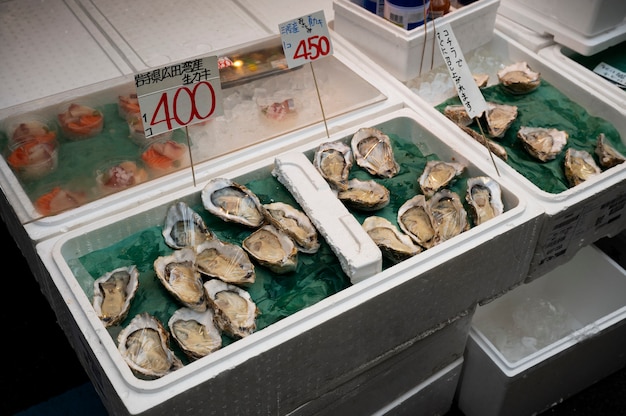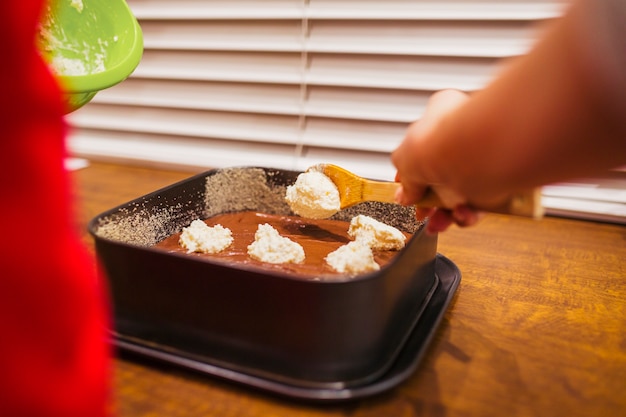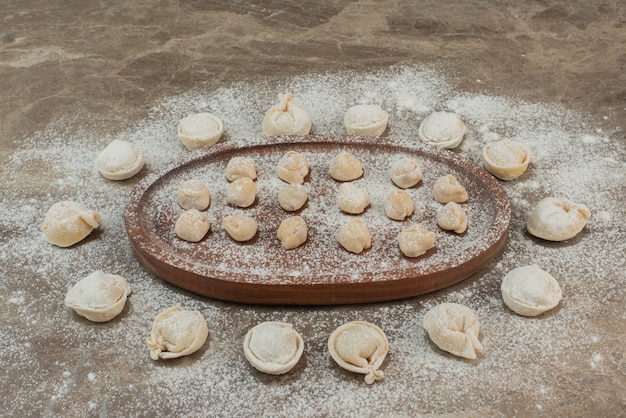As a seasoned home cook, I've spent years in the kitchen, experimenting with countless recipes and techniques. One thing I've learned over time is that mastering the art of cooking scallops is a true test of culinary skill. These delicate bivalves are like a culinary balancing act: get them wrong and you'll end up with tough, rubbery disappointments. But, nail the timing and temperature, and you'll be rewarded with a tender, succulent bite that melts in your mouth. It's a delicious dance that's definitely worth mastering!
One of the most crucial steps in this dance is understanding the oven temperature. It's not just about throwing them in at a random heat and hoping for the best. You need to understand the science behind how heat interacts with scallops to achieve that perfect texture. So grab a cuppa, settle in, and let's dive into the world of oven-baked scallops together.
(Part 1) The Science Behind scallop cooking

The Delicate Dance of Heat and Protein
Scallops are essentially bundles of muscle tissue, and like all proteins, they react to heat in specific ways. When heat is applied, the proteins within the scallop's muscle fibres start to denature, changing their structure. This change is what causes the scallop to firm up. But, cook them too long, and the denaturation goes too far, resulting in a rubbery, unpleasant texture. It's a culinary tightrope walk!
The key to achieving perfectly cooked scallops is to apply heat for just the right amount of time – enough to denature the proteins to the desired level of firmness, but not so much that you end up with a chewy, dry mess. This delicate balance is where the oven temperature comes into play.
The Importance of Oven Temperature
Oven temperature plays a crucial role in how quickly heat penetrates the scallop, directly impacting how quickly those proteins denature. Higher temperatures mean faster cooking, leading to quicker denaturation. This can be a good thing, especially if you're aiming for a crispy sear on the outside while keeping the interior tender. But, it also increases the risk of overcooking if you're not vigilant.
On the other hand, a lower oven temperature means a gentler cooking process, allowing for a slower denaturation. This method is ideal for achieving an evenly cooked scallop with a tender and juicy interior, but it may take longer to reach the desired level of doneness.
(Part 2) The perfect oven temperature for scallops

Now, let's get down to brass tacks. The ideal oven temperature for scallops is between 400°F (200°C) and 450°F (230°C). This range allows for both quick searing and gentle cooking, depending on what you're aiming for.
The Key to Success: Oven Preheating
Before you even think about tossing those scallops into the oven, make sure it's preheated to the desired temperature. This crucial step ensures that the oven reaches the correct temperature and maintains a consistent cooking environment for your scallops. Preheating prevents them from sticking to the baking sheet and helps ensure even cooking throughout.
Most recipes will specify a specific temperature, but I find it's always a good idea to check the oven temperature with a separate thermometer for accuracy. My trusty old thermometer has saved me countless times, especially when dealing with delicate ingredients like scallops. It's a small investment that can make a big difference!
(Part 3) Different Methods for cooking scallops in the oven

Now that we've established the perfect oven temperature range, let's explore some popular methods for cooking scallops in the oven. Remember, the key is to be mindful of the time, the temperature, and the level of doneness you desire.
1. Baking Sheet Method
This is a simple and straightforward method that works well for larger quantities of scallops. Simply line a baking sheet with parchment paper or a silicone baking mat, place the scallops on top, drizzle with olive oil, and season generously with salt and pepper. Then, pop the sheet into your preheated oven and bake for 5-7 minutes, or until the scallops are cooked through and have a slight browning on the edges.
For this method, I find that 425°F (220°C) works best for achieving a crispy exterior without overcooking the interior. I also recommend turning the scallops halfway through cooking to ensure even browning. It's a little extra effort, but it makes a big difference in the end.
2. Broiling Method
For a faster and more intense cooking method, broiling is a good option. Preheat your oven to broil and position the rack about 6 inches away from the heating element. Place your scallops on a baking sheet lined with parchment paper, drizzle with olive oil, season generously with salt and pepper, and broil for 2-4 minutes, or until they're golden brown and cooked through. Be careful with this method, as it can easily lead to overcooked scallops if you're not watching closely.
With this method, it's crucial to watch the scallops closely to avoid overcooking. I find that 3-4 minutes is usually sufficient, but it's best to err on the side of caution and check them frequently. Remember, a little undercooked is better than overcooked when it comes to scallops!
3. Roasting Method
For a more elegant presentation, roasting is a great option. Preheat your oven to 400°F (200°C) and place the scallops on a baking sheet lined with parchment paper. Drizzle with olive oil, season generously with salt and pepper, and add any desired herbs or spices. Roast for 8-10 minutes, or until the scallops are cooked through and have a slightly browned exterior. This method is particularly well-suited for scallops that are part of a larger dish, like a roasted vegetable medley or a seafood casserole.
The gentle heat of the oven allows the scallops to cook slowly and evenly while complementing the flavours of the other ingredients. It's a versatile method that can work beautifully in a variety of dishes.
(Part 4) Understanding scallop doneness
Knowing how to tell when a scallop is perfectly cooked is essential for achieving culinary bliss. Unlike steak, where you can judge doneness by colour, scallops are a bit trickier to decipher. Here are some key indicators to look for:
1. Appearance
A perfectly cooked scallop will have a slightly opaque, milky white appearance, with a slight browning on the edges. The edges will be crisp and firm, while the centre will remain tender and juicy. This is the hallmark of a scallop that's been cooked just right.
2. Texture
The texture of a cooked scallop should be firm but springy to the touch. It should not feel rubbery or overly firm. The centre of the scallop should be moist and tender, while the edges should be slightly crisp. This is where you can really tell if the heat has been applied correctly.
3. internal temperature
For a foolproof method, use an instant-read thermometer to check the internal temperature of the scallops. The ideal internal temperature for a perfectly cooked scallop is 135°F (57°C). This is the gold standard for a scallop that's both cooked through and retains its delicate texture.
(Part 5) The Art of Seasoning
Don't underestimate the power of seasoning! A simple sprinkle of salt and pepper can elevate your scallops to a whole new level of flavour. But why stop there? Experiment with different herbs and spices to create unique flavour profiles.
Herbs and Spices for Scallops
- Fresh Herbs: Parsley, dill, thyme, rosemary, sage, chives – these bring a bright, fresh flavour that complements the delicate sweetness of the scallop.
- Dried Herbs: Oregano, basil, marjoram, tarragon – these offer a more intense, concentrated flavour, adding depth and complexity to the dish.
- Spices: Garlic powder, onion powder, paprika, cayenne pepper, cumin, coriander – these add warmth and complexity, ranging from subtle to spicy depending on your preference.
Tips for Seasoning
- Season liberally: Don't be shy with the salt and pepper. Scallops have a delicate flavour, so they need a good dose of seasoning to enhance their taste.
- Season before cooking: Season the scallops before placing them in the oven. This allows the seasoning to adhere to the scallops and infuse their flavour during cooking.
- Experiment with different combinations: Don't be afraid to experiment with different herbs and spices to create your own unique flavour combinations. It's all about finding the flavours you love!
(Part 6) The Importance of Resting
Once your scallops are cooked to perfection, it's crucial to give them a few minutes to rest before serving. This allows the juices to redistribute within the scallop, resulting in a more tender and flavorful experience. I recommend letting them rest for 5-10 minutes before serving, allowing those flavours to meld and create a truly satisfying culinary experience.
(Part 7) Serving Suggestions
The possibilities for serving perfectly cooked scallops are endless! Here are a few ideas to inspire your culinary creativity.
1. Classic Scallop Dish
Serve your scallops with a simple side of sautéed spinach, a squeeze of lemon juice, and a sprinkle of flaky sea salt. This classic combination highlights the natural sweetness of the scallops and creates a light and refreshing dish, perfect for a simple yet elegant meal.
2. Scallops with Risotto
Pair your scallops with a creamy risotto made with arborio rice, Parmesan cheese, and a touch of white wine. The contrasting textures of the tender scallops and the creamy risotto make for a truly satisfying meal. The risotto's richness complements the delicate sweetness of the scallops beautifully.
3. Scallops with Pasta
Combine your scallops with a simple pasta dish, such as spaghetti with garlic and olive oil, or linguine with clam sauce. The scallops add a touch of elegance and sophistication to the pasta dish, elevating it to a new level of deliciousness. It's a simple combination that yields an impressive result.
4. Scallops with grilled vegetables
For a summery and vibrant dish, grill your scallops alongside a medley of seasonal vegetables, such as bell peppers, zucchini, and asparagus. The smoky flavour of the grill complements the sweetness of the scallops and the vibrant colours of the vegetables, creating a stunning and delicious dish. It's a perfect way to showcase the best of summer produce.
(Part 8) FAQs
Here are some frequently asked questions about cooking scallops in the oven.
1. How do I know if a scallop is cooked through?
The best way to determine if a scallop is cooked through is by checking its internal temperature. A perfectly cooked scallop should have an internal temperature of 135°F (57°C). You can also judge doneness by the appearance and texture of the scallop. A cooked scallop will have a slightly opaque, milky white appearance, with a slight browning on the edges. The texture should be firm but springy to the touch, not rubbery or overly firm.
2. What happens if I overcook scallops?
Overcooked scallops will be tough, rubbery, and dry. The proteins in the muscle fibres will have denatured too much, leading to a less desirable texture and flavour. Avoid overcooking by checking the scallops frequently and using an instant-read thermometer to ensure they reach the desired internal temperature.
3. How long can I keep cooked scallops in the fridge?
Cooked scallops can be stored in the refrigerator for up to 3 days. Make sure to store them in an airtight container and refrigerate them immediately after cooking. To reheat, simply place the scallops in a preheated oven at 350°F (175°C) for a few minutes until heated through.
4. Can I freeze scallops?
Yes, you can freeze scallops. To freeze scallops, place them in a single layer on a baking sheet lined with parchment paper. Freeze for 2-3 hours, or until solid. Once frozen, transfer the scallops to a freezer-safe bag and store for up to 3 months. When ready to use, thaw the scallops in the refrigerator overnight.
5. What are the best types of scallops to cook in the oven?
sea scallops are the most common type of scallop used for cooking. They are larger and have a more pronounced flavour than bay scallops. You can also use bay scallops in the oven, but they may require a shorter cooking time due to their smaller size. Choose scallops that are fresh and firm to the touch. Avoid scallops that have a strong fishy smell or are discoloured.
(Part 9) Conclusion
Cooking scallops in the oven can be a rewarding experience, especially when you understand the science behind heat and its effect on protein. By paying attention to the oven temperature, monitoring cooking time, and following the tips and tricks outlined in this guide, you can achieve perfectly cooked scallops every time. So, next time you're craving a delicious and satisfying seafood dish, give oven-baked scallops a try. You might just discover a new favourite!
Everyone is watching

Corn on the Cob: The Ultimate Guide to Perfectly Cooked Ears
Healthy MealsAh, corn on the cob. Just the name evokes images of sunny days, barbecues, and that sweet, juicy flavour that ...

Perfect Pork Roast Oven Cooking Time: A Guide to Delicious Results
Healthy MealsThere's something truly satisfying about a perfectly roasted pork. The aroma alone is enough to make your mout...

Ham Cooking Time: How Long to Bake, Smoke, or Boil a Delicious Ham
Healthy MealsAh, ham. It's a classic, isn't it? A real crowd-pleaser, especially around holidays. And when done right, it'...

Scallops: The Ultimate Guide to Perfect Cooking
Healthy MealsAh, scallops. Those delicate, sweet, and utterly delicious morsels of the sea. They hold a special place in my...

Spaghetti Squash: The Ultimate Guide to Cooking and Serving
Healthy MealsRemember that time you saw spaghetti squash at the supermarket, looking all bumpy and strange, and thought, "W...
